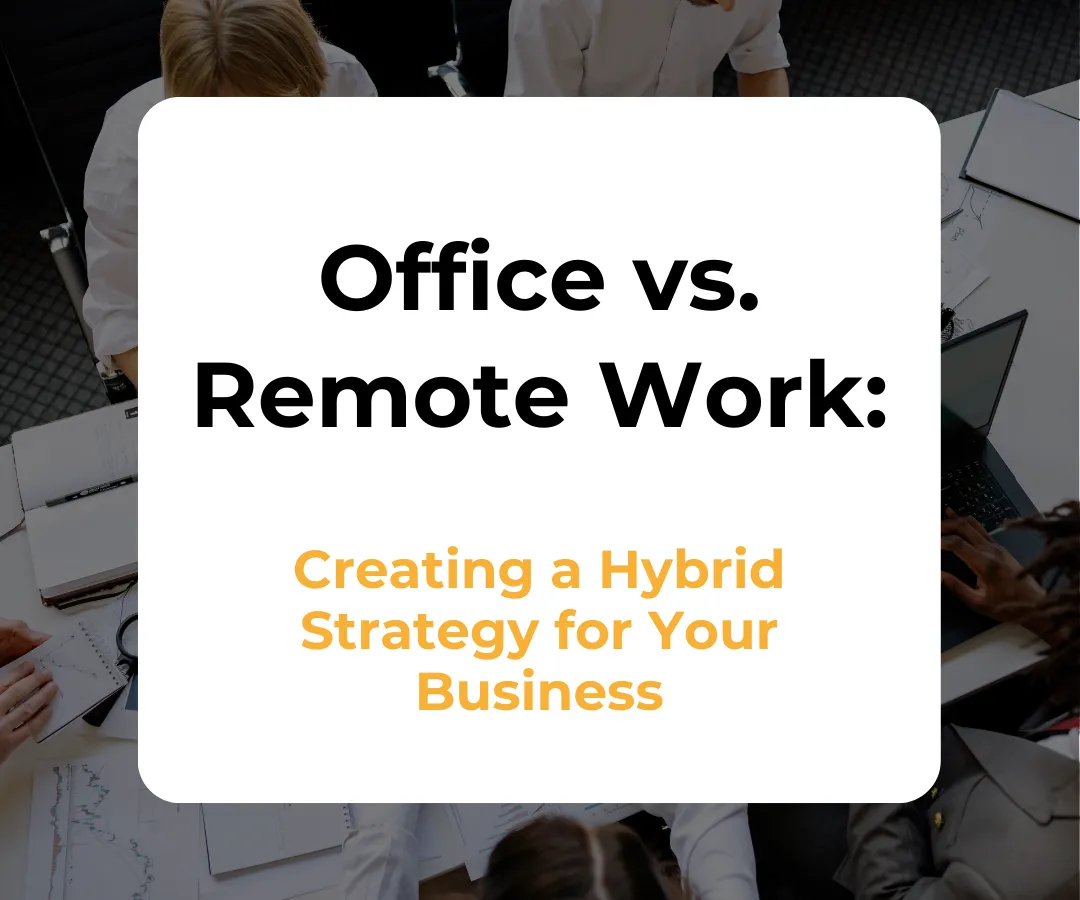Mon - Fri: 9:00 - 17:30
Legacy Strategies
Blogs & Articles
Stay up to date with the latest news
in Recruitment and Human Resources
Legacy Strategies
Blogs & Articles
Stay up to date with the latest news in Recruitment and Human Resources
At Legacy Strategies, we understand that the people behind any organisation are its most valuable asset. That's why we're excited to share our insights, expertise, and industry knowledge with you through our blogs.
In this space, you can find a wealth of information on the latest trends, best practices and innovative strategies that shape the Recruitment and HR landscape. Whether you're a HR professional, a hiring manager, a job seeker, or just someone interested in the ever-evolving world of talent acquisition and management, our blog is your go-to resource.
Stay tuned for regular updates as we explore the cutting-edge developments in HR technology, diversity and inclusion, talent acquisition strategies, and much more. We're here to empower you with knowledge that can drive your organisation's success!
At Legacy Strategies, we understand that the people behind any organisation are its most valuable asset. That's why we're excited to share our insights, expertise, and industry knowledge with you through our blogs.
In this space, you can find a wealth of information on the latest trends, best practices and innovative strategies that shape the Recruitment and HR landscape. Whether you're a HR professional, a hiring manager, a job seeker, or just someone interested in the ever-evolving world of talent acquisition and management, our blog is your go-to resource.
Stay tuned for regular updates as we explore the cutting-edge developments in HR technology, diversity and inclusion, talent acquisition strategies, and much more. We're here to empower you with knowledge that can drive your organisation's success!

Office vs. Remote Work: Creating a Hybrid Strategy for Your Business

The modern workplace has undergone a seismic shift in recent years. Once, the office was the undisputed hub of productivity, collaboration, and company culture. Then came the rise of remote work, proving that employees could be just as effective—if not more so—without the daily commute and the constraints of a traditional office. So, where does that leave businesses today?
The answer lies in hybrid working—a balanced blend of office and remote work that meets the needs of both employees and employers. But how do you create a hybrid work strategy that actually works? Let’s explore how businesses can craft an approach that not only keeps teams productive but also fosters a positive work culture.
1. Define Your Hybrid Work Model
There’s no one-size-fits-all when it comes to hybrid work. Some companies, like Google, have opted for a structured model where employees are required to be in the office on certain days. Others, such as Airbnb, have embraced a fully flexible approach, allowing employees to work from anywhere. The key is aligning your hybrid model with company goals, culture, and operational needs.
Key Considerations:
What percentage of time should employees spend in the office vs. remotely?
Will all employees follow the same model, or will it vary by role and department?
How will you ensure fairness and consistency across the business?
2. Establish Clear Communication Channels
Hybrid work thrives on strong communication. Without clear guidelines, remote employees can feel disconnected, and collaboration can suffer. Investing in the right tools—whether it’s Slack, Microsoft Teams, or Zoom—is crucial.
Best Practices for Hybrid Communication:
Set expectations for response times and availability.
Encourage asynchronous communication to reduce unnecessary meetings.
Use project management tools like Trello, Asana, or Monday.com to track progress.
Hold regular town halls to ensure transparency across all levels of the organisation.
3. Foster a Strong Company Culture
Company culture isn’t about the physical office; it’s about shared values, goals, and ways of working. Businesses like Spotify, which have adopted the ‘work from anywhere’ policy, still maintain strong team cohesion through intentional engagement efforts.
Ways to Strengthen Culture in a Hybrid Workplace:
Organise regular in-person team events or retreats.
Celebrate achievements and milestones equally for remote and in-office staff.
Foster an open and inclusive work environment where employees feel heard.
Implement virtual ‘watercooler’ moments to maintain social interactions.
4. Ensure Fairness and Inclusivity
One challenge of hybrid work is ensuring that remote employees don’t feel left out. Research shows that proximity bias—where in-office employees receive more recognition and opportunities—can be a real issue.
Steps to Promote Fairness:
Conduct regular check-ins and feedback sessions.
Use objective performance metrics rather than attendance-based evaluations.
Provide equal access to training and career development opportunities.
Encourage leadership to model inclusive behaviour by ensuring remote voices are heard.
5. Provide the Right Tools and Support
For hybrid work to succeed, employees need the right tools. A poorly equipped home setup can lead to frustration and lost productivity. Companies like Dropbox, which have embraced a remote-first model, provide stipends for home office setups.
Essential Hybrid Work Resources:
High-quality video conferencing equipment and reliable internet.
Cybersecurity measures to protect company data.
Clear guidelines on work hours, deliverables, and expectations.
Investment in employee well-being initiatives, such as mental health support.
6. Measure Success and Adapt Accordingly
The best hybrid work strategies are flexible. Regular feedback and performance data should guide any refinements to the model. Companies like Microsoft continuously tweak their hybrid policies based on employee feedback and productivity data.
Key Metrics to Track Hybrid Work Success:
Employee engagement and satisfaction levels.
Productivity and performance indicators.
Retention and recruitment trends.
The effectiveness of collaboration and innovation within teams.
Final Thoughts
Hybrid working isn’t just a temporary solution—it’s the future. Businesses that get it right will see higher employee satisfaction, better talent retention, and improved productivity. A well-crafted hybrid strategy prioritises communication, culture, and fairness, ensuring that employees thrive no matter where they work.
How We Can Help
Are you looking to implement or refine your hybrid work strategy? At Legacy Strategies, we specialise in helping businesses navigate the complexities of modern work environments. Get in touch today to see how we can support your organisation.
Contact us today to discuss how we can support your business.
📞 01702 540145
📧 info@legacystrategiesltd.co.uk
References & Links
Remote work vs. work from home: differences and benefits | Indeed.com UK
(7) Remote Work vs. Traditional Office: Comparing Benefits and Drawbacks | LinkedIn

Office vs. Remote Work: Creating a Hybrid Strategy for Your Business

The modern workplace has undergone a seismic shift in recent years. Once, the office was the undisputed hub of productivity, collaboration, and company culture. Then came the rise of remote work, proving that employees could be just as effective—if not more so—without the daily commute and the constraints of a traditional office. So, where does that leave businesses today?
The answer lies in hybrid working—a balanced blend of office and remote work that meets the needs of both employees and employers. But how do you create a hybrid work strategy that actually works? Let’s explore how businesses can craft an approach that not only keeps teams productive but also fosters a positive work culture.
1. Define Your Hybrid Work Model
There’s no one-size-fits-all when it comes to hybrid work. Some companies, like Google, have opted for a structured model where employees are required to be in the office on certain days. Others, such as Airbnb, have embraced a fully flexible approach, allowing employees to work from anywhere. The key is aligning your hybrid model with company goals, culture, and operational needs.
Key Considerations:
What percentage of time should employees spend in the office vs. remotely?
Will all employees follow the same model, or will it vary by role and department?
How will you ensure fairness and consistency across the business?
2. Establish Clear Communication Channels
Hybrid work thrives on strong communication. Without clear guidelines, remote employees can feel disconnected, and collaboration can suffer. Investing in the right tools—whether it’s Slack, Microsoft Teams, or Zoom—is crucial.
Best Practices for Hybrid Communication:
Set expectations for response times and availability.
Encourage asynchronous communication to reduce unnecessary meetings.
Use project management tools like Trello, Asana, or Monday.com to track progress.
Hold regular town halls to ensure transparency across all levels of the organisation.
3. Foster a Strong Company Culture
Company culture isn’t about the physical office; it’s about shared values, goals, and ways of working. Businesses like Spotify, which have adopted the ‘work from anywhere’ policy, still maintain strong team cohesion through intentional engagement efforts.
Ways to Strengthen Culture in a Hybrid Workplace:
Organise regular in-person team events or retreats.
Celebrate achievements and milestones equally for remote and in-office staff.
Foster an open and inclusive work environment where employees feel heard.
Implement virtual ‘watercooler’ moments to maintain social interactions.
4. Ensure Fairness and Inclusivity
One challenge of hybrid work is ensuring that remote employees don’t feel left out. Research shows that proximity bias—where in-office employees receive more recognition and opportunities—can be a real issue.
Steps to Promote Fairness:
Conduct regular check-ins and feedback sessions.
Use objective performance metrics rather than attendance-based evaluations.
Provide equal access to training and career development opportunities.
Encourage leadership to model inclusive behaviour by ensuring remote voices are heard.
5. Provide the Right Tools and Support
For hybrid work to succeed, employees need the right tools. A poorly equipped home setup can lead to frustration and lost productivity. Companies like Dropbox, which have embraced a remote-first model, provide stipends for home office setups.
Essential Hybrid Work Resources:
High-quality video conferencing equipment and reliable internet.
Cybersecurity measures to protect company data.
Clear guidelines on work hours, deliverables, and expectations.
Investment in employee well-being initiatives, such as mental health support.
6. Measure Success and Adapt Accordingly
The best hybrid work strategies are flexible. Regular feedback and performance data should guide any refinements to the model. Companies like Microsoft continuously tweak their hybrid policies based on employee feedback and productivity data.
Key Metrics to Track Hybrid Work Success:
Employee engagement and satisfaction levels.
Productivity and performance indicators.
Retention and recruitment trends.
The effectiveness of collaboration and innovation within teams.
Final Thoughts
Hybrid working isn’t just a temporary solution—it’s the future. Businesses that get it right will see higher employee satisfaction, better talent retention, and improved productivity. A well-crafted hybrid strategy prioritises communication, culture, and fairness, ensuring that employees thrive no matter where they work.
How We Can Help
Are you looking to implement or refine your hybrid work strategy? At Legacy Strategies, we specialise in helping businesses navigate the complexities of modern work environments. Get in touch today to see how we can support your organisation.
Contact us today to discuss how we can support your business.
📞 01702 540145
📧 info@legacystrategiesltd.co.uk
References & Links
Remote work vs. work from home: differences and benefits | Indeed.com UK
(7) Remote Work vs. Traditional Office: Comparing Benefits and Drawbacks | LinkedIn

Office vs. Remote Work: Creating a Hybrid Strategy for Your Business

The modern workplace has undergone a seismic shift in recent years. Once, the office was the undisputed hub of productivity, collaboration, and company culture. Then came the rise of remote work, proving that employees could be just as effective—if not more so—without the daily commute and the constraints of a traditional office. So, where does that leave businesses today?
The answer lies in hybrid working—a balanced blend of office and remote work that meets the needs of both employees and employers. But how do you create a hybrid work strategy that actually works? Let’s explore how businesses can craft an approach that not only keeps teams productive but also fosters a positive work culture.
1. Define Your Hybrid Work Model
There’s no one-size-fits-all when it comes to hybrid work. Some companies, like Google, have opted for a structured model where employees are required to be in the office on certain days. Others, such as Airbnb, have embraced a fully flexible approach, allowing employees to work from anywhere. The key is aligning your hybrid model with company goals, culture, and operational needs.
Key Considerations:
What percentage of time should employees spend in the office vs. remotely?
Will all employees follow the same model, or will it vary by role and department?
How will you ensure fairness and consistency across the business?
2. Establish Clear Communication Channels
Hybrid work thrives on strong communication. Without clear guidelines, remote employees can feel disconnected, and collaboration can suffer. Investing in the right tools—whether it’s Slack, Microsoft Teams, or Zoom—is crucial.
Best Practices for Hybrid Communication:
Set expectations for response times and availability.
Encourage asynchronous communication to reduce unnecessary meetings.
Use project management tools like Trello, Asana, or Monday.com to track progress.
Hold regular town halls to ensure transparency across all levels of the organisation.
3. Foster a Strong Company Culture
Company culture isn’t about the physical office; it’s about shared values, goals, and ways of working. Businesses like Spotify, which have adopted the ‘work from anywhere’ policy, still maintain strong team cohesion through intentional engagement efforts.
Ways to Strengthen Culture in a Hybrid Workplace:
Organise regular in-person team events or retreats.
Celebrate achievements and milestones equally for remote and in-office staff.
Foster an open and inclusive work environment where employees feel heard.
Implement virtual ‘watercooler’ moments to maintain social interactions.
4. Ensure Fairness and Inclusivity
One challenge of hybrid work is ensuring that remote employees don’t feel left out. Research shows that proximity bias—where in-office employees receive more recognition and opportunities—can be a real issue.
Steps to Promote Fairness:
Conduct regular check-ins and feedback sessions.
Use objective performance metrics rather than attendance-based evaluations.
Provide equal access to training and career development opportunities.
Encourage leadership to model inclusive behaviour by ensuring remote voices are heard.
5. Provide the Right Tools and Support
For hybrid work to succeed, employees need the right tools. A poorly equipped home setup can lead to frustration and lost productivity. Companies like Dropbox, which have embraced a remote-first model, provide stipends for home office setups.
Essential Hybrid Work Resources:
High-quality video conferencing equipment and reliable internet.
Cybersecurity measures to protect company data.
Clear guidelines on work hours, deliverables, and expectations.
Investment in employee well-being initiatives, such as mental health support.
6. Measure Success and Adapt Accordingly
The best hybrid work strategies are flexible. Regular feedback and performance data should guide any refinements to the model. Companies like Microsoft continuously tweak their hybrid policies based on employee feedback and productivity data.
Key Metrics to Track Hybrid Work Success:
Employee engagement and satisfaction levels.
Productivity and performance indicators.
Retention and recruitment trends.
The effectiveness of collaboration and innovation within teams.
Final Thoughts
Hybrid working isn’t just a temporary solution—it’s the future. Businesses that get it right will see higher employee satisfaction, better talent retention, and improved productivity. A well-crafted hybrid strategy prioritises communication, culture, and fairness, ensuring that employees thrive no matter where they work.
How We Can Help
Are you looking to implement or refine your hybrid work strategy? At Legacy Strategies, we specialise in helping businesses navigate the complexities of modern work environments. Get in touch today to see how we can support your organisation.
Contact us today to discuss how we can support your business.
📞 01702 540145
📧 info@legacystrategiesltd.co.uk
References & Links
Remote work vs. work from home: differences and benefits | Indeed.com UK
(7) Remote Work vs. Traditional Office: Comparing Benefits and Drawbacks | LinkedIn
01702 540145
Legacy Strategies Ltd,
Suite 3, 19 Aviation Way,
Southend-on-Sea,
Essex,
SS2 6UN
Mon - Fri: 9:00 - 17:30


